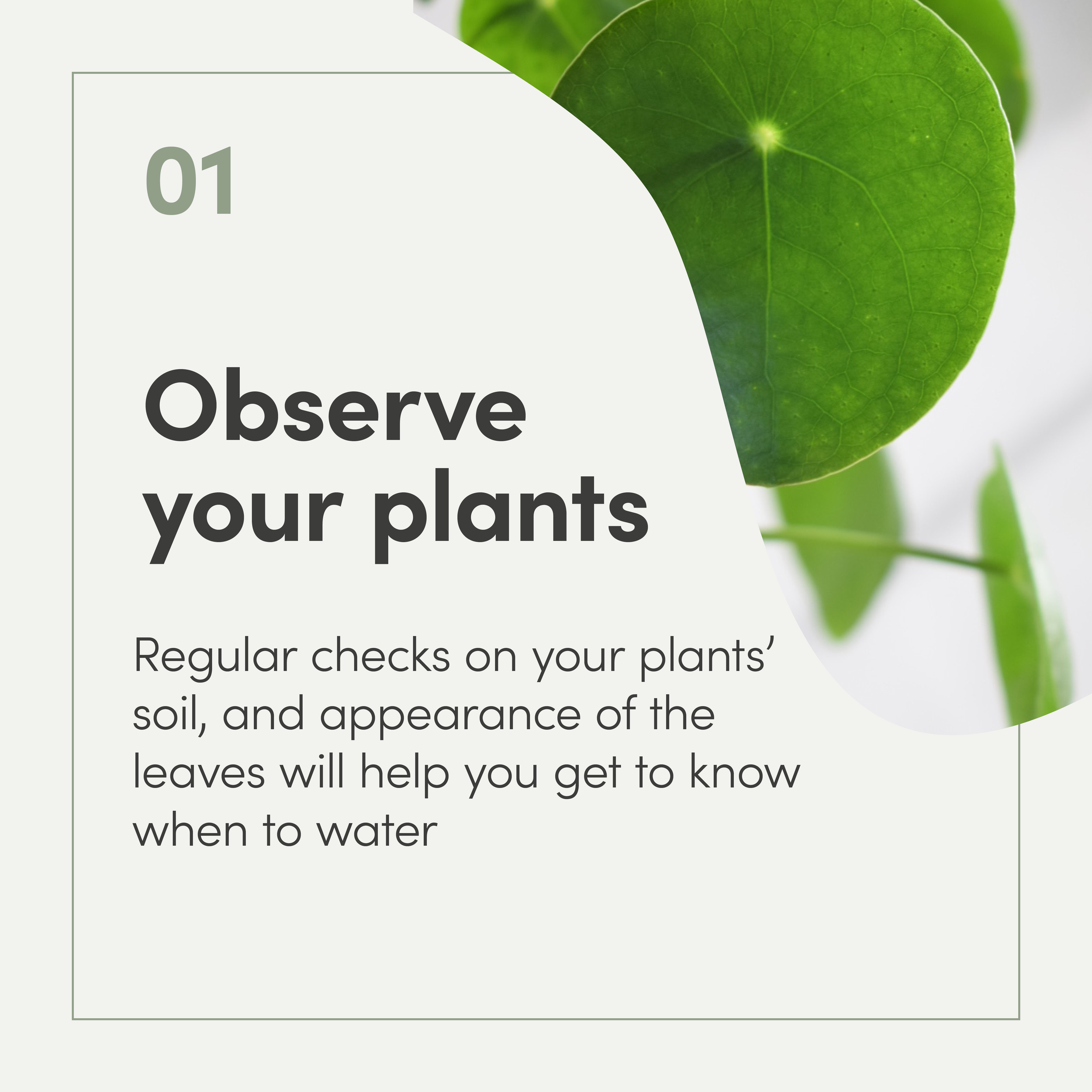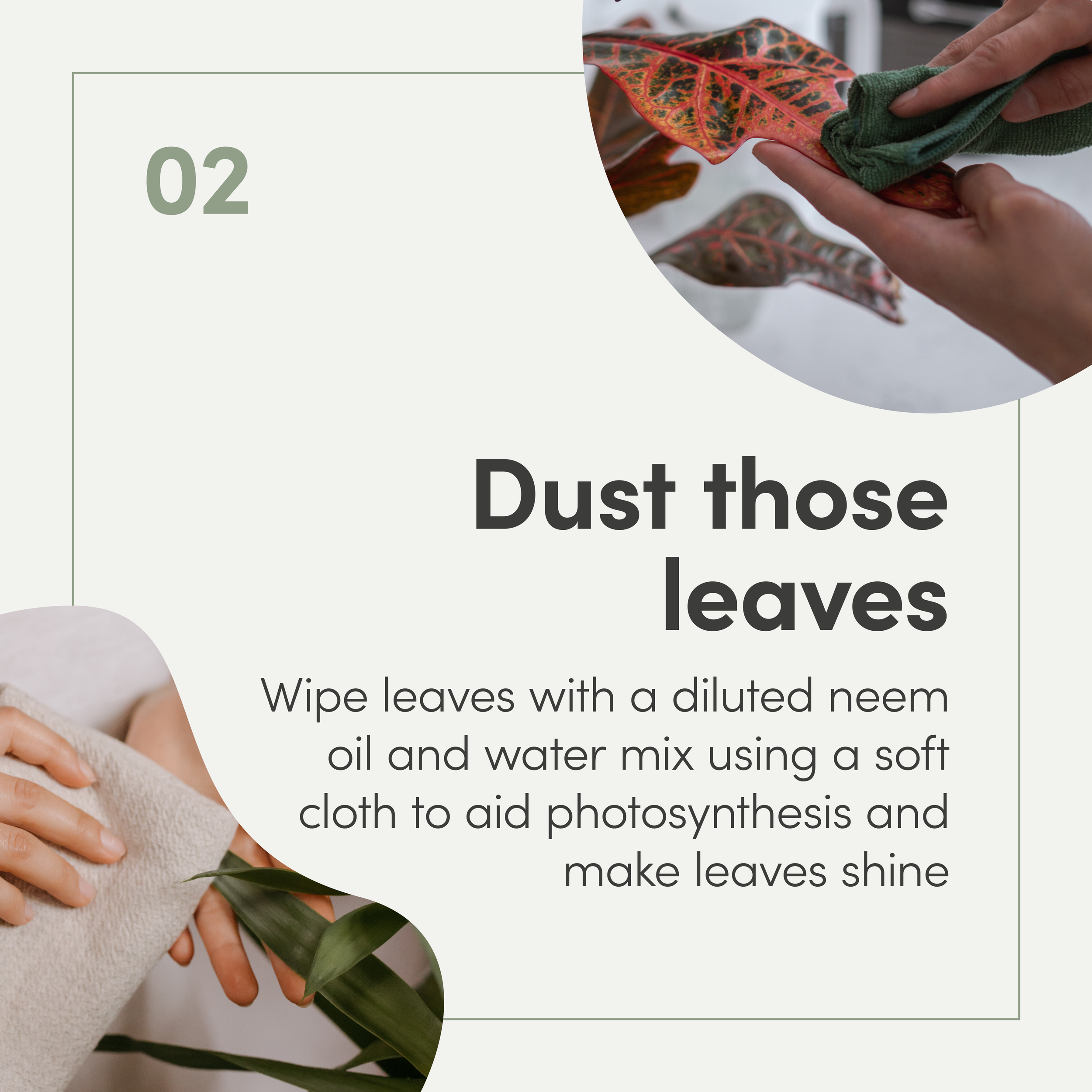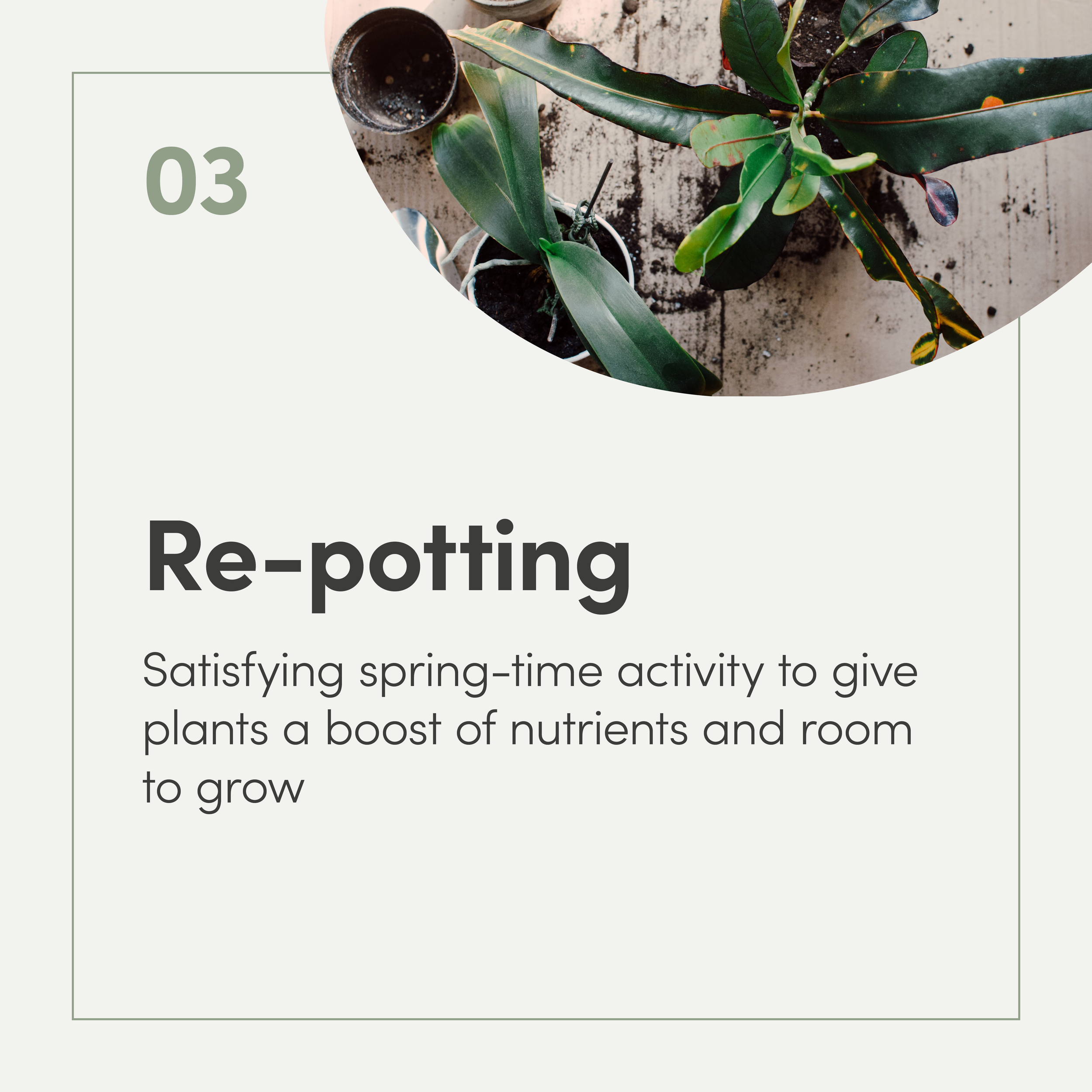For us, looking after houseplants has always been a positive escape from our screen-led lives. Even the simplest of plant care activities can be therapeutic for you and great for your plant. And of course, seeing a plant thrive in your care is hugely satisfying,
Here are 5 easy plant care tasks that are a lovely mindful activity to do.
Spending time simply observing your plants and how they change over time really helps you get to know when they need watering, repotting or feeding. Perhaps you notice that the leaves are curling more than usual, or succulents are looking puckered, this is your cue to water. Is a plant that hasn’t been re-potted for over a year looking yellow and unhealthy, perhaps a feed or repotting would do it some good.
Cleaning plants leaves with a very diluted neem oil and water mix is not only a lovely therapeutic task but helps to keep them dust-free and therefore aiding photosynthesis. We like to add a small dash of neem oil (max 2.5ml) and a small squirt of washing up liquid in a litre of water, then use this to spray the leaves and wipe with a soft clean cloth. The leaves will be clean, shiny and it helps to keep pests away.
Re-potting plants in spring is such a satisfying thing to do and important for their growth for the year ahead. Remember that you will only need to increase the pot size slightly, by just a couple of centimetres. Use peat-free compost with some added perlite to aid drainage. For the right kind of potting mix to suit your plants see the ‘potting mix’ section of our very useful houseplant care blog.
A regular thorough check for pests and pest damage is good for you and the plant, be sure to check under the leaves and on stems too. See our houseplant pest blog for what to look out for and how to treat. Calathea are particularly prone to spidermites so keep an extra close eye on these. It is always a good idea once introducing a new plant into your home to quarantine it away from your other plants for a couple of weeks.
Leaves that are yellow or dry and brown are not benefiting the plant any longer and they can be removed. It’s a rewarding task as the plant will look so much better for it. As leaves reach the end of their life they will naturally turn yellow and die, however if you are experiencing this on newer leaves too, try having a look through the trouble shooting section of our ultimate houseplant care guide.





